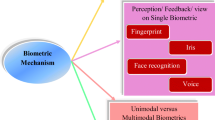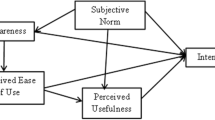Abstract
Self-service technology use and adoption can be seen as an evolutionary process. From a conceptual perspective, evolution delivers the growing advantages of self-service. From a practical perspective, evolution is based on user perceptions and attitude toward adopting the technology. Based on the latter perspective of technology adoption, this paper presents an analysis of three empirical studies exploring self-service solutions for Chinese customers. These studies involve several user-centred research methodologies. The studies were carried out as a result of research collaboration between Sino-European Usability Centre (SEUC), Dalian Maritime University, China and Advanced Technology and Research (AT&R), NCR, U.K. The first study investigates the introduction of a basic automated teller machine (ATM) accommodating Chinese user requirement. Findings indicate that the relationship between individuals’ pre-adoption and post-adoption perceptions of ATMs was a critical determinant of its continued use. The second study focussed on the functionality of ATMs in terms of using cash deposit solution. The study reports that the successful use of cash deposit was evaluated on the basis of users’ understanding of deposit solution. The third study addressed biometric technology use for enhanced security on ATMs. Consistent with previous findings, user perceptions emerged as an important determinant of biometric technology adoption in the Chinese financial market. Based on user perceptions, these studies provide an understanding into the self-service future in China. Several user-centred design guidelines to adapt self-service technology to Chinese user requirements have emerged. Also, these studies offer valuable outcomes in terms of useful insights into the current Chinese banking culture. These insights provide Chinese financial institutions a basis to strategically introduce self-service technology on a broad scale.
Chapter PDF
Similar content being viewed by others
Keywords
These keywords were added by machine and not by the authors. This process is experimental and the keywords may be updated as the learning algorithm improves.
References
De Angeli, A., Athavankar, U., Joshi, A., Coventry, L., Johnson, G.I.: Introducing ATMs in India: a contextual inquiry. Interacting with Computers. Special Issue: Global human-computer systems 16(1), 29–44 (2004)
Davis, F.D.: Perceived Usefulness, Perceived Ease of Use and User Acceptance of Information Technology. MIS Quarterly 13(3), 319–340 (1989)
Liu, Z.: Usability Practice in China: An Update. User Experience 5(2), 13–15 (2006)
Liu, Z., Coventry, L., White, R., Wu, H., Johnson, G.: Self-service technology in China: Exploring usability and consumer issues. Proceedings of the 19th British HCI Conference 2, 173–178 (2005)
Wang, J.: Human-Computer Interaction Research and Practice in China. Interactions 10(2), 88–96 (2003)
Author information
Authors and Affiliations
Editor information
Rights and permissions
Copyright information
© 2007 Springer-Verlag Berlin Heidelberg
About this paper
Cite this paper
Aziz, M. et al. (2007). Investigating the Use and Adoption of Self-service Technology in China. In: Stephanidis, C. (eds) Universal Acess in Human Computer Interaction. Coping with Diversity. UAHCI 2007. Lecture Notes in Computer Science, vol 4554. Springer, Berlin, Heidelberg. https://doi.org/10.1007/978-3-540-73279-2_3
Download citation
DOI: https://doi.org/10.1007/978-3-540-73279-2_3
Publisher Name: Springer, Berlin, Heidelberg
Print ISBN: 978-3-540-73278-5
Online ISBN: 978-3-540-73279-2
eBook Packages: Computer ScienceComputer Science (R0)




